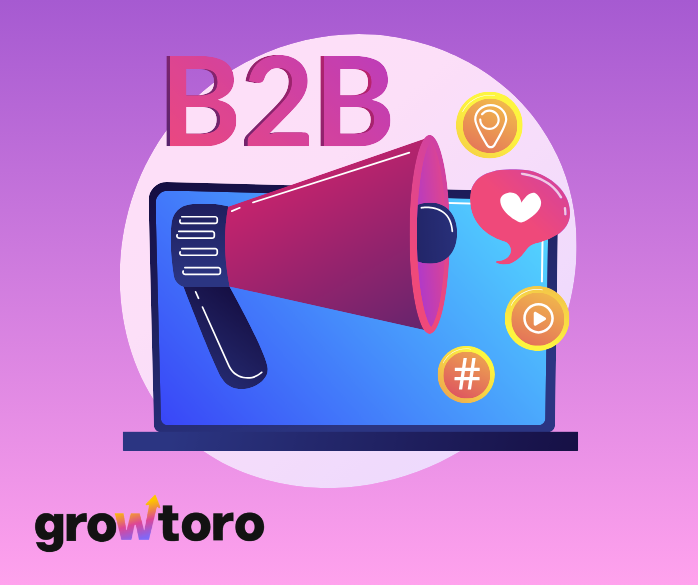B2B Data: Types, Uses & Complete Guide for 2024

In the fast-paced world of business, data is king. Specifically, B2B (business-to-business) data has become an invaluable asset for companies looking to gain a competitive edge. But what exactly is B2B data, and why is it so important in 2024? Let's dive into the types, uses, and collection methods of B2B data, and explore how Growtoro's services can help businesses build powerful, personalized databases.
Types of B2B Data
Contact Data
Contact data is the cornerstone of any B2B database. This type of data includes details such as names, email addresses, phone numbers, and job titles of potential leads and clients. Collecting accurate contact data ensures that your marketing and sales teams can reach the right people at the right time.
Firmographic Data
Firmographic data provides insights into company characteristics. It includes information like company size, industry, revenue, and location. This data helps businesses segment their market and tailor their strategies to target specific types of companies more effectively.
Intent Data
Intent data is a powerful tool that reveals the buying intent of potential customers. It tracks online behaviors and interactions, such as website visits and content downloads, to determine where a prospect is in their buying journey. Using intent data allows businesses to prioritize leads who are more likely to convert.
Technographic Data
Technographic data focuses on the technology stack used by companies. It includes information about the software, hardware, and tools that a business employs. Understanding a company's technology preferences can help in tailoring marketing messages and product offerings to meet their needs.
Engagement Data
Engagement data measures how prospects and customers interact with your brand. It encompasses metrics such as email opens, click-through rates, social media interactions, and website visits. This data helps businesses understand what content resonates with their audience and optimize their engagement strategies accordingly.
Uses of B2B Data
Marketing
B2B data is essential for creating targeted marketing campaigns. By leveraging detailed contact and firmographic data, businesses can segment their audience and deliver personalized messages that speak directly to their needs. This leads to higher engagement rates and improved ROI.
Sales
In sales, B2B data is used for lead generation and account-based marketing (ABM). With accurate data, sales teams can identify high-potential leads and tailor their pitches to address specific pain points. This personalized approach increases the likelihood of closing deals and building long-term relationships.
Customer Service
Customer service teams can use B2B data to enhance the customer experience. By having a comprehensive view of customer interactions and preferences, they can proactively address issues and provide tailored support. This level of service fosters customer loyalty and satisfaction.
Product Development
B2B data plays a crucial role in product development. By analyzing engagement and intent data, companies can identify market trends and gaps. This information guides the creation of new products and features that align with customer needs, driving innovation and growth.
Collecting B2B Data
Traditional Methods
Traditional methods of collecting B2B data include surveys, questionnaires, public records, and directories. While these methods can provide valuable information, they are often time-consuming and may not always yield the most up-to-date data.
Modern Techniques
Modern techniques such as web scraping and social media monitoring have revolutionized B2B data collection. These methods allow businesses to gather real-time data from various online sources, providing a more accurate and comprehensive view of their market.
Growtoro Services
Growtoro offers a range of services to help businesses build and manage their B2B databases effectively:
- Build Your Own Database: Create a personalized database with up to 500,000 contacts. This one-time service ensures you have all the contact information you need without the hassle of ongoing subscriptions.
- Job Board Scraping: Get contact details from companies posting specific job openings. This service helps you target businesses actively looking to fill roles that align with your offerings.
- Social Media Scrapes: Extract verified emails from social media accounts or hashtags to build highly targeted audiences. This service is perfect for reaching prospects who are engaged and interested in your industry.
Managing and Analyzing B2B Data
Data Management Best Practices
Effective data management is crucial for maximizing the value of B2B data. This involves regular data cleansing to remove outdated or incorrect information, and data integration to ensure that all data sources are unified and accessible.
Analytical Tools
Using analytical tools like CRM systems and data analytics software can help businesses make sense of their data. These tools provide insights that drive decision-making and strategy development, ensuring that your data works for you.
Ethical Considerations and Compliance
Data Privacy Laws
With the increasing focus on data privacy, it's essential to comply with regulations such as GDPR (General Data Protection Regulation) and CCPA (California Consumer Privacy Act). These laws protect consumer data and dictate how businesses can collect, store, and use it.
Ethical Data Usage
Ethical data usage involves being transparent with data collection practices and respecting user consent. Businesses must prioritize ethical standards to build trust with their audience and avoid legal repercussions.
Future Trends in B2B Data
AI and Machine Learning
Artificial intelligence (AI) and machine learning are transforming B2B data analysis. Predictive analytics can forecast market trends and customer behaviors, while automation streamlines data processing tasks, making it easier to manage large datasets.
Data Security
As cyber threats evolve, data security remains a top priority. Advances in cybersecurity measures and secure data sharing protocols help protect sensitive information and maintain data integrity.
Conclusion
B2B data is a powerful asset that drives marketing, sales, customer service, and product development. By understanding the different types of B2B data and how to collect and manage it, businesses can unlock new opportunities for growth. Growtoro's services offer tailored solutions to help you build a robust and effective B2B database, ensuring you stay ahead in the competitive landscape of 2024.




